The Cane Corso, also known as the Italian Mastiff, is a large and powerful breed that has recently gained popularity among dog lovers. With their muscular build and imposing presence, Cane Corsos are often considered formidable guard dogs.
However, there has been some confusion surrounding their eye color, specifically the presence of blue eyes. While it is not uncommon for certain dog breeds to have blue eyes, this characteristic has caused quite a stir among Cane Corso owners and enthusiasts.
We will delve into the topic of whether or not does cane corso have blue eyes and explore the reasons behind this confusion. By understanding the genetics and common misconceptions surrounding this topic, we hope to shed light on the truth behind the blue-eyed Cane Corso and provide clarity for those who may be wondering about this aspect of the breed.
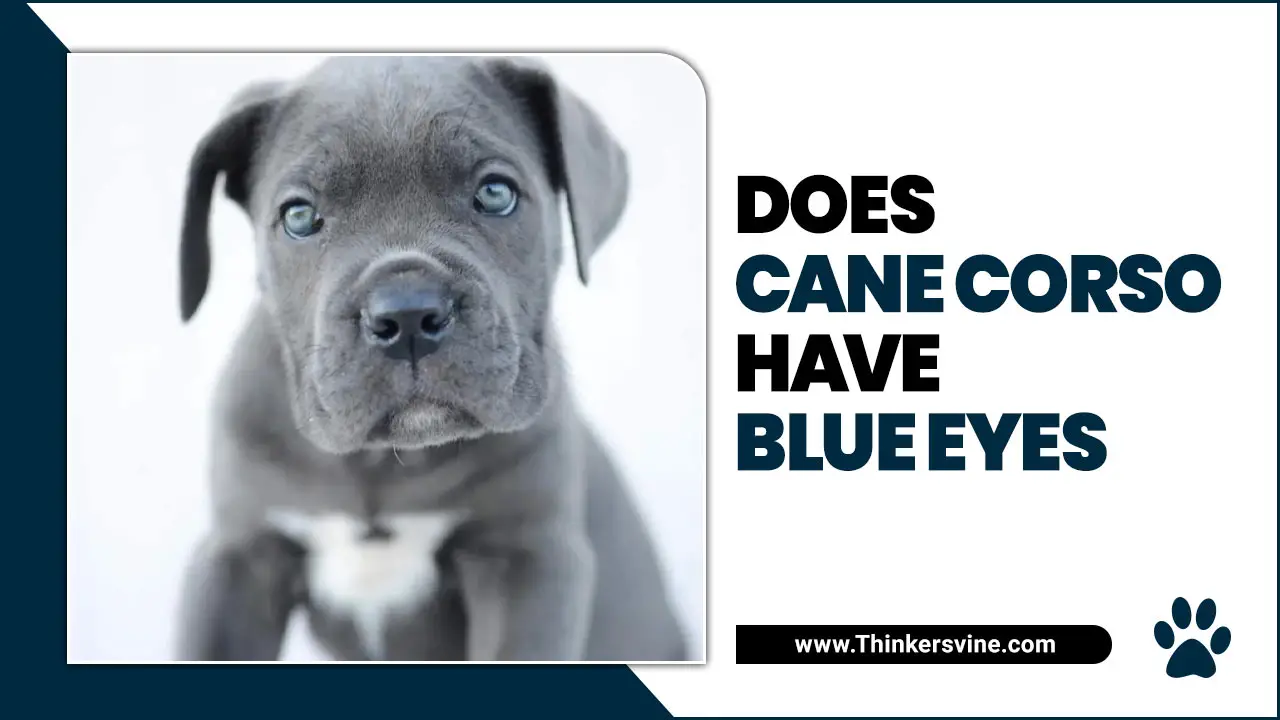
What Are The Different Colors Of Cane Corsos?
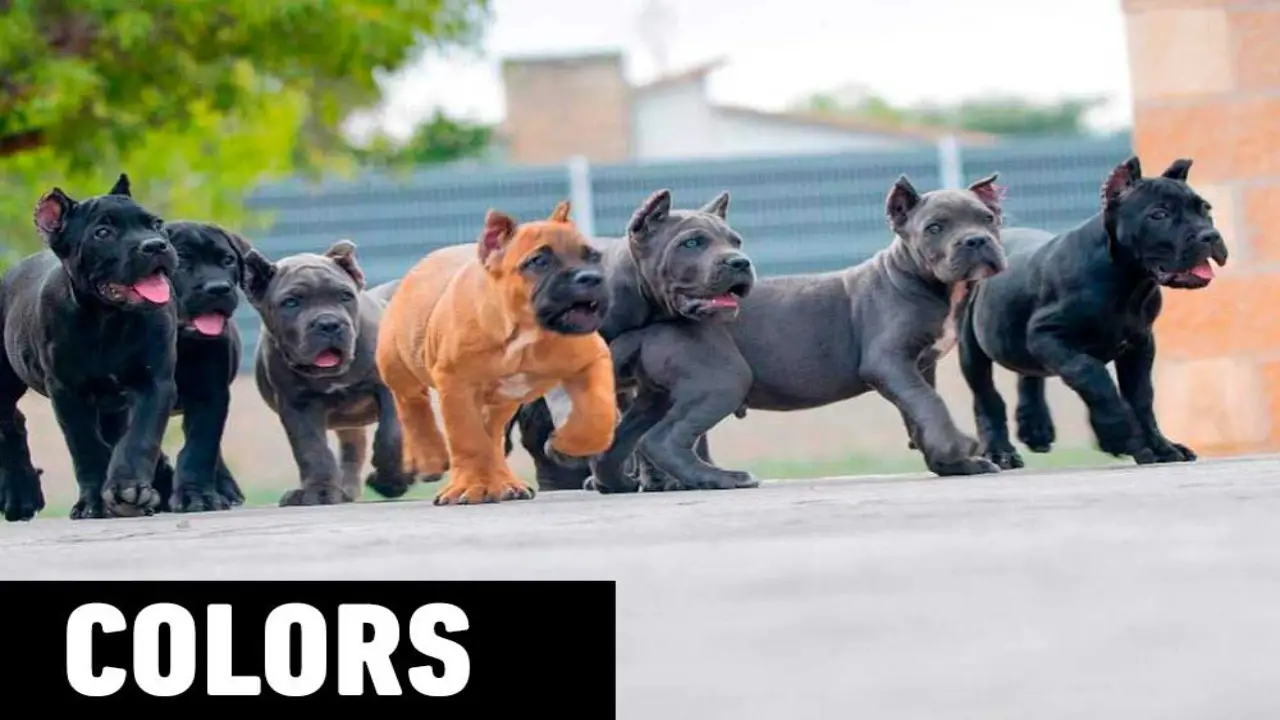
Cane Corsos come in various colors, including black, brown, grey, blue, and yellow. Blue eyes are the rarest color of cane Corso, and yellow eyes are relatively uncommon too. Cane Corsos with darker shades of coat color, such as black, brown, or red, is more likely to have blue eyes.
Cane Corsos with lighter coat color shades of coat color are more likely to have gold eyes. Some people believe that different color eyes reflect the temperament and character of the dog. Some dog circles may see blue eyes as symbols of nobility or intelligence. In contrast, brown eyes may denote sweetness or friendliness.
Cane Corso Eye Color Standard
Regarding the eye color of Cane Corsos, the original breed standard does not include blue eyes. According to the recognized breed standards, Cane Corsos should have a dark coat color and brown eyes that are medium in size and oval in shape.
According to the breed standards, blue eyes in Cane Corsos are considered a fault and undesirable. While some individual dogs may have blue eyes due to genetic variations or other factors, it is not considered a breed characteristic. It’s important to note that when choosing a Cane Corso puppy, it’s best to prioritize health, temperament, and adherence to breed standards rather than focusing solely on eye color.
Blue Eyes In Different Coat Colors
Cane Corsos are popular for their striking appearance, and blue eyes can be a particularly eye-catching feature in this breed. While blue eyes are not common in Cane Corsos, they can occur in dogs with certain coat colors. Cane Corsos with a blue or grey coat color commonly have blue eyes. However, it is important to note that not all Cane Corsos with a blue or grey coat will have blue eyes. Eye color in dogs is determined by genetics, and it can vary even within the same litter.
Grey Cane Corso With Blue Eyes
One particular combination that stands out is the striking sight of a grey-coated Cane Corsos with blue eyes. The contrast between the sleek, charcoal-colored coat and those mesmerizing azure orbs is truly captivating. It’s as if the very essence of mystery and elegance has been embodied in this magnificent creature.
The grey Cane Corso, known for its powerful build and noble presence, exudes an air of strength and grace. But when paired with those piercing blue eyes, its appearance takes on an ethereal quality that is hard to ignore.
Black Cane Corso With Blue Eyes
Another stunning combination that showcases the allure of blue eyes in different coat colors is the black Cane Corso with blue eyes. The glossy, jet-black fur against the piercing azure gaze creates a remarkable contrast that demands attention.
The black Cane Corso, known for its imposing stature and protective, affectionate nature, becomes even more captivating when adorned with mesmerizing blue eyes. It’s a sight that commands respect and admiration as if this majestic creature holds secrets within its depths.
Blue Cane Corso With Blue Eyes
Now, imagine a Cane Corso that not only has a blue coat but also captivating blue eyes. A blue Cane Corso with blue eyes is a sight to behold, as if it were a living work of art. The monochromatic beauty of the coat combined with those piercing sapphire eyes creates an otherworldly appearance. This rare combination showcases the enchantment of blue eyes in different coat colors. It’s like a symphony of shades and hues, where every element harmonizes perfectly to create a breathtaking masterpiece.
White Cane Corso Blue Eyes
The white Cane Corso with blue eyes is a striking sight, reminiscent of a celestial being. The purity and brilliance of the white coat accentuate the depth and intensity of those mesmerizing azure orbs. This majestic creature seems touched by moonlight, radiating an ethereal glow that captures the imagination.
In the realm of Cane Corsos, where strength and power are often emphasized, the white coat paired with blue eyes brings a unique allure. It stands out among its counterparts, evoking a sense of unmatched serenity and elegance.
Does Cane Corso Have Blue Eyes? – Know All The Details
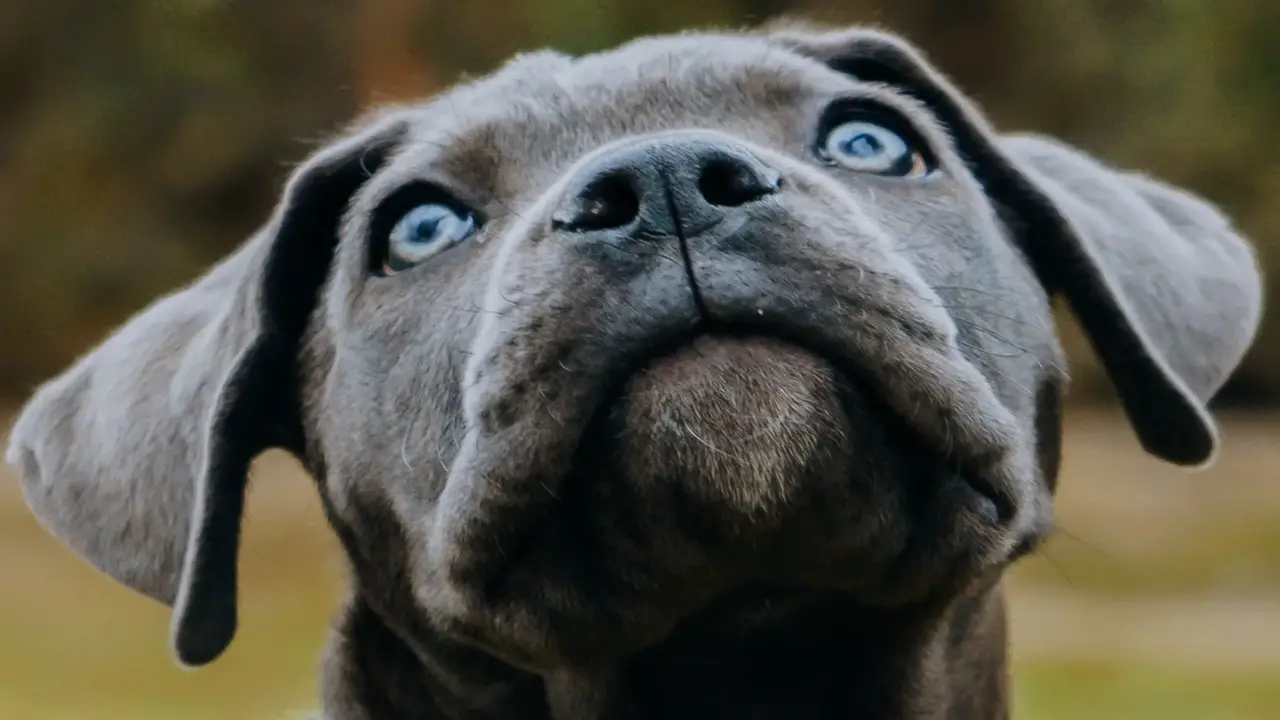
Yes, Cane Corso does have blue eyes. However, the color of their eyes will depend on the coat color of the individual Cane Corso. For example, a black Cane Corso with a red coat will have blue eyes due to the red in their coat. A blue Cane Corso with a black coat will also have blue eyes, but due to the black in their coat, their eyes will appear darker than a blue Cane Corso with a white patch coat.
Blue eyes are not exclusively found in Cane Corso breeders and may vary somewhat among individual Cane Corso puppies. However, most cane Corso puppies will have brown or black eyes. When they were a small newborn puppy, Cane Corso had blue eyes. But with age, their eyes become darker. Some people believe that blue eyes are a sign of aristocracy in canines. Many dog breeds from wealthy families, such as poodles and Labradors, tend to have blue eyes.
Blue Eyes Cane Corso Breeder Scam
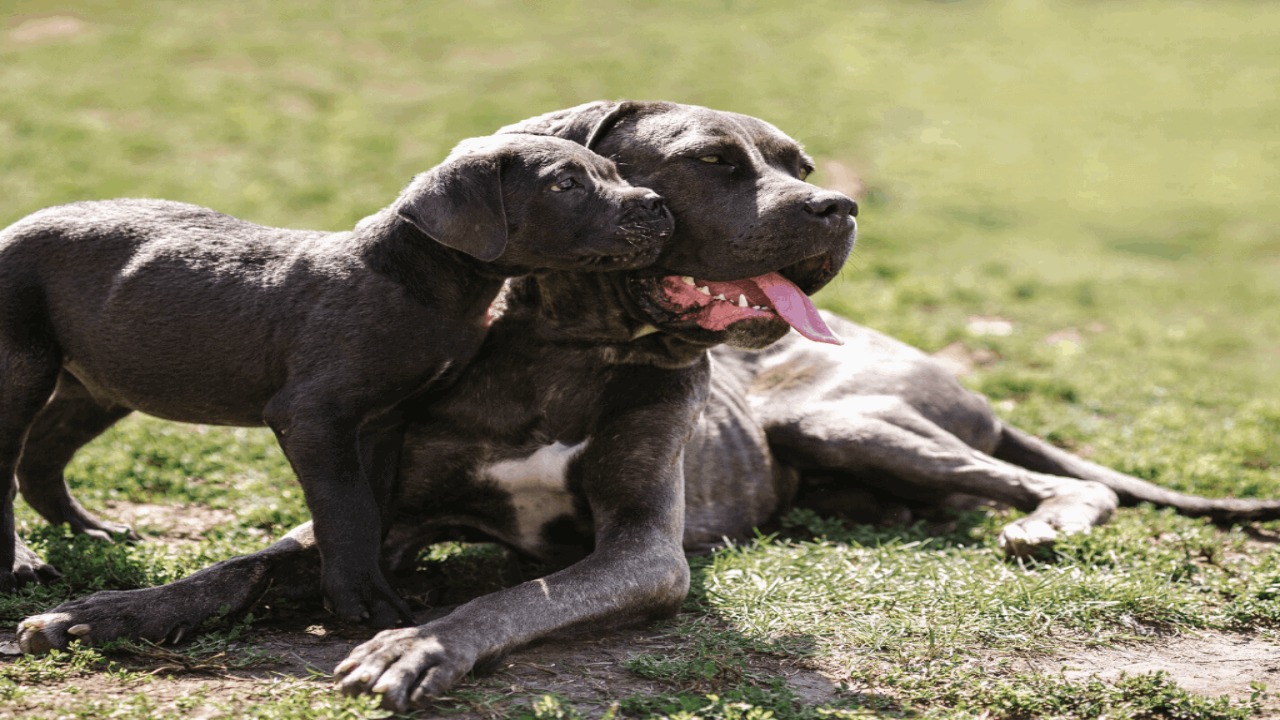
When looking for a Cane Corso with blue eyes, it is important to know about potential scams. While Cane Corsos can have blue eyes, it is not a common trait in the breed and should not be handy as a selling point or a reason to charge a higher price.
Some unscrupulous breeders may try to exploit this desire for blue-eyed Cane Corsos and falsely advertise their puppies as having blue eyes. It is always recommended to do thorough research on reputable backyard breeders and ask for health clearances and certifications before purchasing a puppy. Remember, the health and well-being of the dog should always be the top priority rather than specific physical characteristics.
Do Cane Corso Eyes Stay Blue?
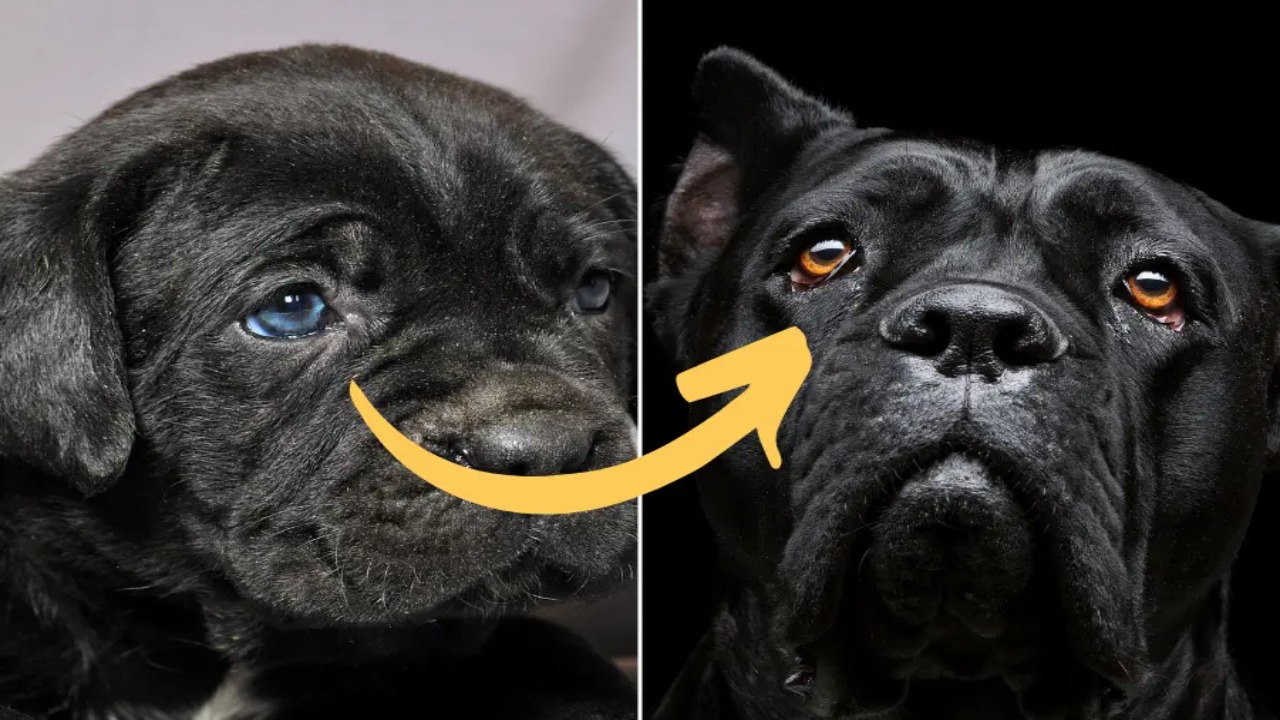
Cane Corso’s eyes do not always stay blue. Their eye colors change due to various reasons. It will stay blue if you don’t expose the dog to excessive sunlight. In the summer months, Cane Corso’s eyes will turn a shade of brown or greenish-blue. Generally, the eye color of dogs of this breed changes several times before it becomes permanent. The first change is within 6 months of birth when their eye color is brown, black brindle, or dark green.
How Does Their Eye Color Change?
Everyone’s wondering when Cane Corso puppies’ eyes change color and, if they do, what color they will be. Well, this question has quite a complicated answer. Eyes do change color at different times for different breeds of dogs. Still, the process usually starts around six to eight weeks old. At this point, the pupil in the eye will start to get a larger and dark coat, which is when the dog’s eyes start to change color.
Some say that blue eyes are most common in Cane Corso dogs, but other colors, such as brown, hazel, and green, are also pretty common. When the blue color turns into black muzzles, you can be sure that the Cane Corso is a purebred dog and has been carefully selected for its eye color.
Does Cane Corsos Have Eye Problems?
Cane Corso is a popular breed of dog, and as such, they are subject to the same health concerns as any other dog. Cane Corso’s eye problems are generally due to genetic issues, including blue and red eyes. Some of the other common color issues include eye allergies, eye disease, seizures, and corneal ulcers.
It is generally advised that cane Corsos should not be put into direct sunlight or near heat sources, as these can increase the risk of developing eye problems. If you notice any changes in your cane Corsos’ eyes or vision, please consult your veterinarian immediately.
At What Age Do Cane Corso’s Eyes Change Color?
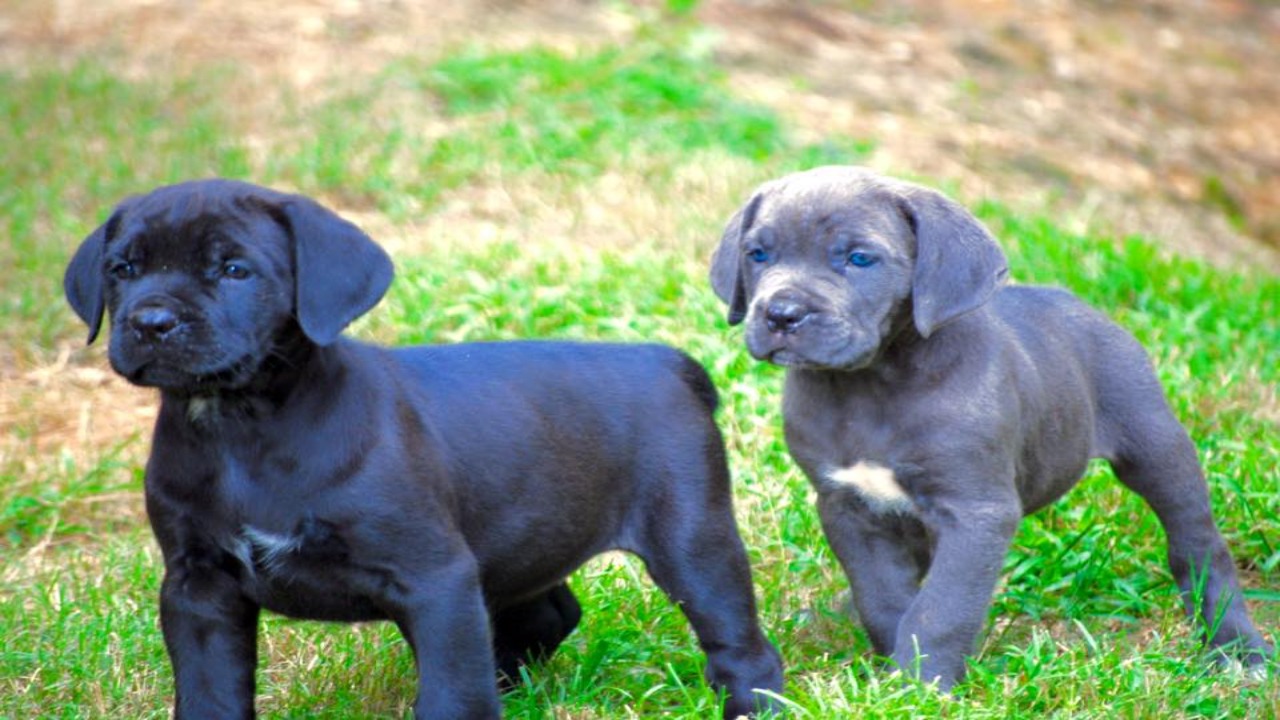
Cane Corso puppies are typically born with blue or grey mask eyes, which gradually change color as they age. The exact age at which their eyes change color can vary from puppy to puppy, but it usually occurs between 6 and 12 weeks of age.
During this time, the pigmentation in their irises develops, causing their eye color to transition from blue or grey to its permanent color, which is typically dark brown or amber. It’s important to note that not all Cane Corsos will dramatically change eye color, and some may retain a bluish tint even into adulthood.
How Does Cane Corsos Get Cherry Eye?
Cane Corsos are born with blue eyes, and the color gradually fades as the dog ages. This is due to a genetic mutation that affects the lack of melanin production. The blue eyes result from increased melanin production in the iris, while the normal light brown eye color is due to less melanin production. All Cane Corsos will have blue puppy eyes due to this gene mutation, but not all will have a cherry eye.
Why Do They Have Red Eyes?
Cane Corsos are the result of a recessive gene that causes red eyes. Both parents of the Cane Corso carry this recessive dilution gene, resulting in the dog having red eyes 50% of the time. Other breeds with this trait include the Doberman pinscher, Boxer, and Bulldog. A gene mutation affects the melanin production of Cane Corso, causing them to have red eyes. This means they have more pigment that produces blue eyes, which may appear reddish.
Effect Of Coat Color On Cane Corso’s Health And Behavior
Cane Corsos are a very popular breed of dog, and as a result, they are subject to the same health concerns as any other dog. Cane Corso’s coat color can have a significant effect on their health and behavior, and it is important to take care to maintain their coat clean and free of mats.
Cane Corsos with short hair are at a greater risk for heatstroke, as their body can’t dissipate the heat as well as a dog with a long coat. Additionally, dogs with short hair are more likely to get fleas and ticks, which can carry diseases.
How To Improve Your Cane Corso’s Lifespan
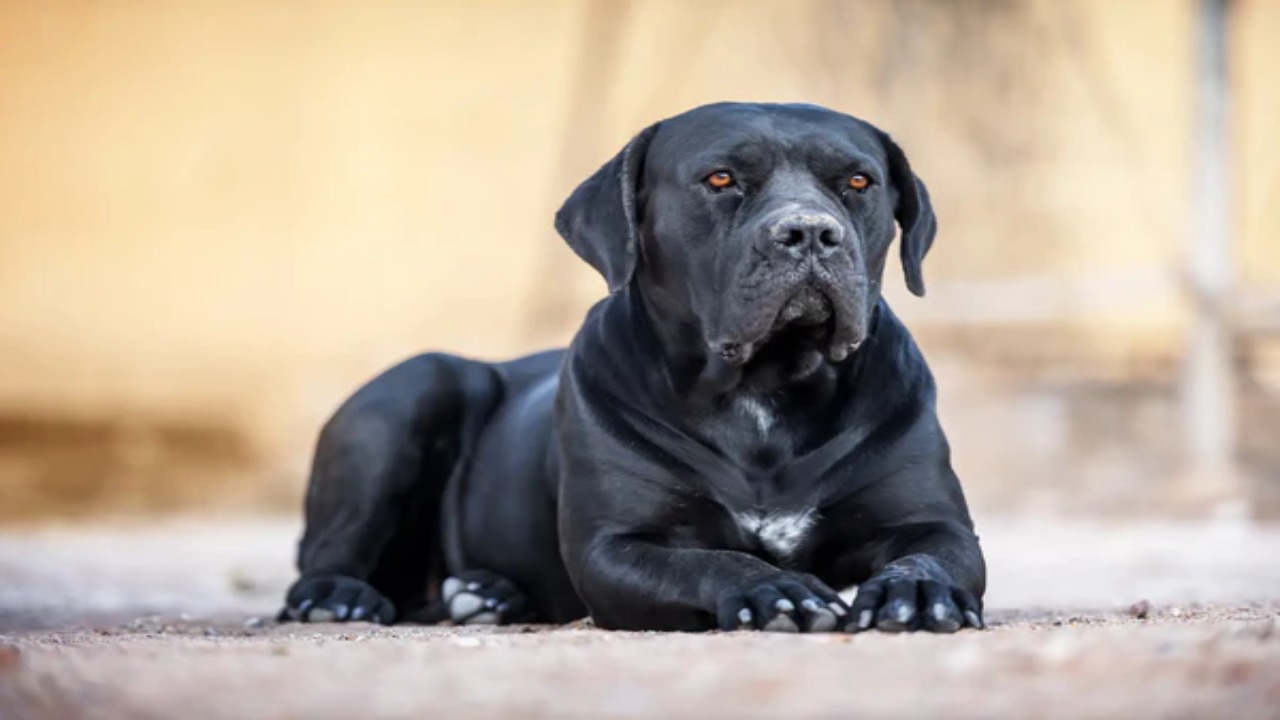
It isn’t always easy to keep our cane Corso looking great. With their long, thick coat, they often require a lot of maintenance – not to mention that they’re very active dogs. But there are ways you can help your cane Corso stay healthy and happy on all those miles you put in together. Here are a few of the most important things to keep in mind:
1.Regularly Trimming The Coat Is Critical
Regularly trimming your Cane Corso’s coat is critical for improving its lifespan. The Cane Corso is popular for its dense and thick coat, which can become easily matted and tangled if not properly maintained. Regular trimming helps to prevent matting and keeps the coat healthy and manageable.
It also allows for better air circulation, reducing the risk of skin infections and other related issues. Additionally, trimming the coat can help to control shedding, keeping your home cleaner and reducing the risk of allergies for family members who may be sensitive to pet dander.
2.Brushing Is Also Important
Brushing is an important aspect of caring for your Cane Corso and can contribute to improving their lifespan. Regular brushing helps to remove loose fur, dirt, and debris from their coat, preventing matting and tangles. It also promotes health certificates skin by stimulating the production of natural oils.
In addition to keeping your dog’s coat looking shiny and healthy, brushing allows you to check for any signs of skin issues or parasites. Brushing your Cane Corso at least once a week, using a brush suitable for their coat type. This simple grooming routine can go a long way in keeping your Cane Corso happy and healthy for years.
3.Keep Your Cane Corso Warm In The Winter
Keeping your Cane Corso warm in the winter is essential for their well-being and can help improve their lifespan. Due to their short coat, Cane Corsos are more susceptible to cold weather and can experience discomfort or even health issues if not adequately protected. Here are some tips to keep your Fawn Cane Corsos warm during the winter months:
- Provide a warm shelter
- Dress them appropriately
- Limit outdoor exposure
- Protect their paws
- Maintain a warm indoor environment
4.Check For Health Issues Regularly
A cane Corso’s coat can be a sign of other health problems, so it is important to keep an eye out for any red flags such as loss of appetite, vomiting or diarrhea, restlessness, pacing around the house, coughing or wheezing, excessive shedding, and dark urine and brownish faeces. If you notice any of these problems, take your cane Corso to a veterinarian for evaluation as soon as possible.
Conclusion
While there may be some rare cases of Cane Corso puppies having color blue eyes, it is not a standard or desirable trait in the breed. As responsible dog owners and responsible breeders, it is important to prioritize the health and well-being of our furry companions over aesthetic characteristics.
This is due to a recessive gene that can produce this unique eye color. It is important to note that blue eyes in Cane Corsos are considered a fault and undesirable in show dogs. However, for those simply looking for a loving and loyal companion, blue-eyed Cane Corsos can still make wonderful pets.
The Cane Corso is a strong and noble breed, known for their intelligence and loyalty, and we should appreciate and value them for their unique qualities rather than solely focusing on their intimidating appearance. We’ve discussed does cane corso have blue eyes. We continue to educate ourselves and others on the responsible care and breeding of Cane Corsos and celebrate them for the amazing dogs that they are.
FAQs
[rank_math_rich_snippet id=”s-1e82a8d8-83b4-4711-9ddc-1ba32e199dbc”]